#artificial intelligence interview questions and answers
Explore tagged Tumblr posts
Text
25 interview questions and answers related to ServiceNow training:
Question: What is ServiceNow, and why is it widely used in the IT industry?Answer: ServiceNow is a cloud-based platform that offers a range of IT service management (ITSM) solutions. It is popular for its ability to streamline workflows, automate processes, and enhance overall efficiency in managing IT services.
Question: Can you explain the key components of the ServiceNow platform?Answer: ServiceNow comprises various modules, including Incident Management, Change Management, Problem Management, Service Catalog, Knowledge Base, and Configuration Management Database (CMDB).
Question: What is the purpose of the CMDB in ServiceNow?Answer: The CMDB (Configuration Management Database) is a centralized repository that stores information about all configuration items (CIs) in an IT infrastructure. It helps in managing and understanding the relationships between different CIs.
Question: How does ServiceNow facilitate ITIL processes?Answer: ServiceNow aligns with ITIL (Information Technology Infrastructure Library) best practices by providing modules such as Incident Management, Problem Management, Change Management, and more to support IT service management processes.
Question: What is the role of the Service Catalog in ServiceNow?Answer: The Service Catalog allows users to request IT services, hardware, or software through a user-friendly interface. It helps in standardizing and automating service delivery.
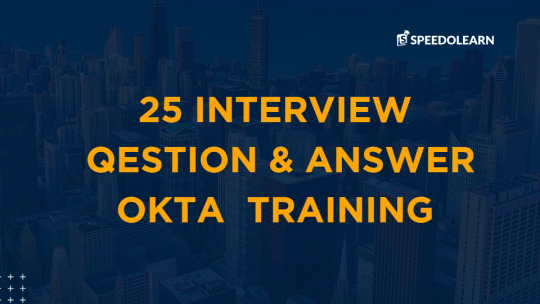
#interview#question&answer#servicenow#25 interview questions#onlinetraining#it technology#education#machine learning#artificial intelligence#technology
1 note
·
View note
Note
So, you don't believe Sam is dating Sara? Why?
The simplest answer to your question would be: I've been watching Sam Heughan for approximately ten years, I read the interviews, I watch the videos and, above all, I pay attention to what people say about him. If I didn't believe that Sam is in a relationship with Caitríona, I still wouldn't believe that he would have anything to do with all these women he's been "linked" to by the fandom or the press. If you look closely at the kind of man Sam Heughan appears to be and those close to him say he is, you certainly wouldn't think that he would be fascinated or fall in love with someone who has the depth of a dinner plate (And I'm not speaking about one specifically, but about all of them in the Antis list ) . He was created by a powerful woman who didn’t demonstrate her power using physical attributes, but by showing talent, intelligence, and attitude towards life. The education he received certainly impacted the man he is today. Sam is a mature and intelligent man, I don't know who thought it would be a good idea to idiotize him and expand the field of idiotization by linking him with stereotypical women within Instagrammable standards. If Sam wasn't with Caitríona, he would certainly be with a woman with the same characteristics as her (and I'm not even talking physically). She would be a discreet woman with a life, someone who likes to read, someone who doesn't care about follower numbers, someone with a worldview that goes beyond her own navel. An independent woman, with whom he would be a companion, an equal and not the saviour , or financier (even if he had more money than her). I don't imagine him in love with mirror-worshipping creatures, I think he needs someone with whom he can talk about things that go beyond the rising prices of protein bars or vegan restaurants. I believe he is fascinated by women who take a political stance, who lead campaigns, who refuse to follow the wave of artificial perfection preached on social media. I don't think he's the kind of man who needs to think he's above a partner's intellectual capacity or maturity to feel safe. He was not raised by a oppressive mother. He certainly likes realistic women, who don't insist on ostentation and who are confident enough to make their own way without depending directly on him.
Interestingly, the same applies to Caitríona. I can't imagine that a woman like her would fall in love and marry someone who seems to live in an eternal state of lethargy in all aspects of life.
And remember:
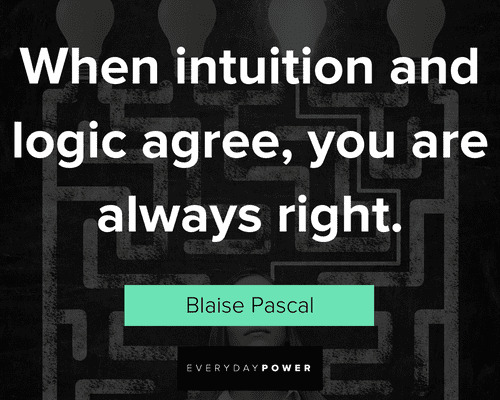
319 notes
·
View notes
Text
The article under the cut
Allies of Elon Musk stationed within the Education Department are considering replacing some contract workers who interact with millions of students and parents annually with an artificial intelligence chat bot, according to internal department documents and communications.
The proposal is part of President Trump’s broader effort to shrink the federal work force, and would mark a major change in how the agency interacts with the public. The Education Department’s biggest job is managing billions of dollars in student aid, and it routinely fields complex questions from borrowers.
The department currently uses both call centers and a rudimentary A.I. bot to answer questions. The proposal would introduce generative A.I., a more sophisticated version of artificial intelligence that could replace many of those human agents.
The call centers employ 1,600 people who field over 15,000 questions per day from student borrowers.
The vision could be a model for other federal agencies, in which human beings are replaced by technology, and behemoth contracts with outside companies are shed or reduced in favor of more automated solutions. In some cases, that technology was developed by players from the private sector who are now working inside or with the Trump administration.
Mr. Musk has significant interest in A.I. He founded a generative A.I. company, and is also seeking to gain control of OpenAI, one of the biggest players in the industry. At other agencies, workers from the newly created Department of Government Efficiency, headed by Mr. Musk, have told federal employees that A.I. would be a significant part of the administration’s cost-cutting plans.
A year after the Education Department oversaw a disastrous rollout of a new federal student aid application, longtime department officials say they are open to the idea of seeking greater efficiencies, as have leaders in other federal agencies. Many are partnering with the efficiency initiative.
But Department of Education staff have also found that a 38 percent reduction in funding for call center operations could contribute to a “severe degradation” in services for “students, borrowers and schools,” according to one internal document obtained by The Times.
The Musk associates working inside the Education Department include former executives from education technology and venture capital firms. Over the past several years, those industries have invested heavily in creating A.I. education tools and marketing them to schools, educators and students.
The Musk team at the department has focused, in part, on a help line that is currently operated on a contract basis by Accenture, a consulting firm, according to the documents reviewed by The Times. The call center assists students who have questions about applying for federal Pell grants and other forms of tuition aid, or about loan repayment.
The contract that includes this work has sent more than $700 million to Accenture since 2019, but is set to expire next week.
“The department is open to using tools and systems that would enhance the customer service, security and transparency of data for students and parents,” said Madi Biedermann, the department’s deputy assistant secretary for communications. “We are evaluating all contracts to assess effectiveness relative to costs.”
Accenture did not respond to interview requests. A September report from the Education Department describes 1,625 agents answering 462,000 calls in one month. The agents also handled 118,000 typed chats.
In addition to the call line, Accenture provides a broad range of other services to the student aid system. One of those is Aidan, a more rudimentary virtual assistant that answers basic questions about student aid. It was launched in 2019, during Mr. Trump’s first term.
Accenture reported in 2021 that Aidan fielded 2.2 million messages in one year. But its capabilities fall far short of what Mr. Musk’s associates envision building using generative A.I., according to the internal documents.
Both Mr. Trump and former President Joseph R. Biden Jr. directed federal agencies to look for opportunities to use A.I. to better serve the public.
The proposal to revamp the communication system follows a meltdown in the rollout of the new Free Application for Federal Student Aid, or FAFSA, last year under Mr. Biden. As FAFSA problems caused mass confusion for students applying for financial aid, several major contractors, including Accenture, were criticized for breakdowns in the infrastructure available to students and parents seeking answers and help.
From January through May last year, roughly three-quarters of the 5.4 million calls to the department’s help lines went unanswered, according to a report by the Government Accountability Office.
More than 500 workers have since been added to the call centers, and wait times were significantly reduced, according to the September Department of Education report.
But transitioning into using generative A.I. for student aid help, as a replacement for some or all human call center workers, is likely to raise questions around privacy, accuracy and equal access to devices, according to technology experts.
Generative A.I. systems still sometimes share information that is false.
Given how quickly A.I. capabilities are advancing, those challenges are potentially surmountable, but should be approached methodically, without rushing, said John Bailey, a fellow at the American Enterprise Institute and former director of educational technology at the Education Department under President George W. Bush.
Mr. Bailey has since become an expert on the uses of A.I. in education.
“Any big modernization effort needs to be rolled out slowly for testing, to see what works and doesn’t work,” he said, pointing to the botched introduction of the new FAFSA form as a cautionary tale.
“We still have kids not in college because of that,” he said.
In recent weeks, the Education Department has absorbed a number of DOGE workers, according to two people familiar with the process, who requested anonymity because they were not authorized to discuss the department’s security procedures and feared for their jobs.
One of the people involved in the DOGE efforts at the Education Department is Brooks Morgan, who until recently was the chief executive of Podium Education, an Austin-based start-up, and has also worked for a venture capital firm focused on education technology, according to the two people.
Another new staffer working at the agency is Alexandra Beynon, the former head of engineering at Mindbloom, a company that sells ketamine, according to those sources and an internal document.
And a third is Adam Ramada, who formerly worked at a Miami venture capital firm, Spring Tide Capital, which invests in health technology, according to an affidavit in a lawsuit filed against the Department of Government Efficiency.
None of those staffers responded to interview requests.
41 notes
·
View notes
Text
Arvind Narayanan, a computer science professor at Princeton University, is best known for calling out the hype surrounding artificial intelligence in his Substack, AI Snake Oil, written with PhD candidate Sayash Kapoor. The two authors recently released a book based on their popular newsletter about AI’s shortcomings.
But don’t get it twisted—they aren’t against using new technology. “It's easy to misconstrue our message as saying that all of AI is harmful or dubious,” Narayanan says. He makes clear, during a conversation with WIRED, that his rebuke is not aimed at the software per say, but rather the culprits who continue to spread misleading claims about artificial intelligence.
In AI Snake Oil, those guilty of perpetuating the current hype cycle are divided into three core groups: the companies selling AI, researchers studying AI, and journalists covering AI.
Hype Super-Spreaders
Companies claiming to predict the future using algorithms are positioned as potentially the most fraudulent. “When predictive AI systems are deployed, the first people they harm are often minorities and those already in poverty,” Narayanan and Kapoor write in the book. For example, an algorithm previously used in the Netherlands by a local government to predict who may commit welfare fraud wrongly targeted women and immigrants who didn’t speak Dutch.
The authors turn a skeptical eye as well toward companies mainly focused on existential risks, like artificial general intelligence, the concept of a super-powerful algorithm better than humans at performing labor. Though, they don’t scoff at the idea of AGI. “When I decided to become a computer scientist, the ability to contribute to AGI was a big part of my own identity and motivation,” says Narayanan. The misalignment comes from companies prioritizing long-term risk factors above the impact AI tools have on people right now, a common refrain I’ve heard from researchers.
Much of the hype and misunderstandings can also be blamed on shoddy, non-reproducible research, the authors claim. “We found that in a large number of fields, the issue of data leakage leads to overoptimistic claims about how well AI works,” says Kapoor. Data leakage is essentially when AI is tested using part of the model’s training data—similar to handing out the answers to students before conducting an exam.
While academics are portrayed in AI Snake Oil as making “textbook errors,” journalists are more maliciously motivated and knowingly in the wrong, according to the Princeton researchers: “Many articles are just reworded press releases laundered as news.” Reporters who sidestep honest reporting in favor of maintaining their relationships with big tech companies and protecting their access to the companies’ executives are noted as especially toxic.
I think the criticisms about access journalism are fair. In retrospect, I could have asked tougher or more savvy questions during some interviews with the stakeholders at the most important companies in AI. But the authors might be oversimplifying the matter here. The fact that big AI companies let me in the door doesn’t prevent me from writing skeptical articles about their technology, or working on investigative pieces I know will piss them off. (Yes, even if they make business deals, like OpenAI did, with the parent company of WIRED.)
And sensational news stories can be misleading about AI’s true capabilities. Narayanan and Kapoor highlight New York Times columnist Kevin Roose’s 2023 chatbot transcript interacting with Microsoft's tool headlined “Bing’s A.I. Chat: ‘I Want to Be Alive. 😈’” as an example of journalists sowing public confusion about sentient algorithms. “Roose was one of the people who wrote these articles,” says Kapoor. “But I think when you see headline after headline that's talking about chatbots wanting to come to life, it can be pretty impactful on the public psyche.” Kapoor mentions the ELIZA chatbot from the 1960s, whose users quickly anthropomorphized a crude AI tool, as a prime example of the lasting urge to project human qualities onto mere algorithms.
Roose declined to comment when reached via email and instead pointed me to a passage from his related column, published separately from the extensive chatbot transcript, where he explicitly states that he knows the AI is not sentient. The introduction to his chatbot transcript focuses on “its secret desire to be human” as well as “thoughts about its creators,” and the comment section is strewn with readers anxious about the chatbot’s power.
Images accompanying news articles are also called into question in AI Snake Oil. Publications often use clichéd visual metaphors, like photos of robots, at the top of a story to represent artificial intelligence features. Another common trope, an illustration of an altered human brain brimming with computer circuitry used to represent the AI’s neural network, irritates the authors. “We're not huge fans of circuit brain,” says Narayanan. “I think that metaphor is so problematic. It just comes out of this idea that intelligence is all about computation.” He suggests images of AI chips or graphics processing units should be used to visually represent reported pieces about artificial intelligence.
Education Is All You Need
The adamant admonishment of the AI hype cycle comes from the authors’ belief that large language models will actually continue to have a significant influence on society and should be discussed with more accuracy. “It's hard to overstate the impact LLMs might have in the next few decades,” says Kapoor. Even if an AI bubble does eventually pop, I agree that aspects of generative tools will be sticky enough to stay around in some form. And the proliferation of generative AI tools, which developers are currently pushing out to the public through smartphone apps and even formatting devices around it, just heightens the necessity for better education on what AI even is and its limitations.
The first step to understanding AI better is coming to terms with the vagueness of the term, which flattens an array of tools and areas of research, like natural language processing, into a tidy, marketable package. AI Snake Oil divides artificial intelligence into two subcategories: predictive AI, which uses data to assess future outcomes; and generative AI, which crafts probable answers to prompts based on past data.
It’s worth it for anyone who encounters AI tools, willingly or not, to spend at least a little time trying to better grasp key concepts, like machine learning and neural networks, to further demystify the technology and inoculate themselves from the bombardment of AI hype.
During my time covering AI for the past two years, I’ve learned that even if readers grasp a few of the limitations of generative tools, like inaccurate outputs or biased answers, many people are still hazy about all of its weaknesses. For example, in the upcoming season of AI Unlocked, my newsletter designed to help readers experiment with AI and understand it better, we included a whole lesson dedicated to examining whether ChatGPT can be trusted to dispense medical advice based on questions submitted by readers. (And whether it will keep your prompts about that weird toenail fungus private.)
A user may approach the AI’s outputs with more skepticism when they have a better understanding of where the model’s training data came from—often the depths of the internet or Reddit threads—and it may hamper their misplaced trust in the software.
Narayanan believes so strongly in the importance of quality education that he began teaching his children about the benefits and downsides of AI at a very young age. “I think it should start from elementary school,” he says. “As a parent, but also based on my understanding of the research, my approach to this is very tech-forward.”
Generative AI may now be able to write half-decent emails and help you communicate sometimes, but only well-informed humans have the power to correct breakdowns in understanding around this technology and craft a more accurate narrative moving forward.
40 notes
·
View notes
Text
SO. The Question. david 8 or 1? i think, in short, Our David(TM)(the custody battle was long and fierce but he belongs to all of us now. fuck weyland) WAS a david 8 in prometheus but this was retconned into him being the First in covenant. in long, uhhhh. it's complicated. let's get to the meat (or...cadmium alloy?) of the matter. apologies in advance if this is like incomprehensible, i'm awful with words LOL
so first of all let's go through the prometheus marketing materials: they all seem to point to david being an 8.
youtube
now i don't necessarily believe the david being interviewed in this video is Our David (yeah i'm gonna be calling him that for the rest of this post) but the fact is that this video's purpose was to give us an insight into the david that would star in prometheus, so i assume it implies strongly that the david in prometheus is also an 8
the old promotional website straight up calls him an 8
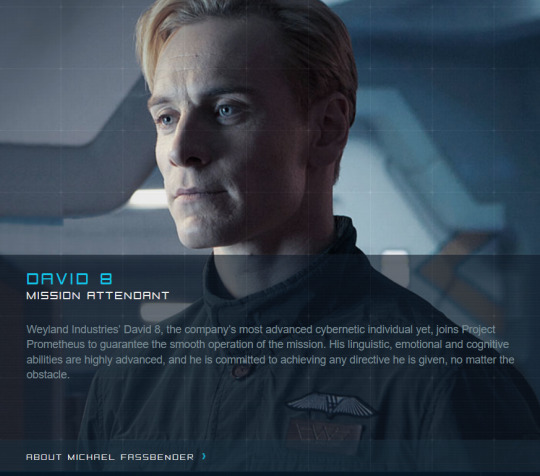
but now let's look at covenant, where he is retconned to be The First david to be made and activated. covenant opens with our david's activation: notice how old weyland is in this? he's pretty young looking compared to fuckin' methuselah we see in prometheus LOL.

BUT! how can this be? if our david is a david 8 he could have only been activated after 2068, 2068 being the year david 7 was released according to the timeline, by which time weyland, born in 1990, must've been 77.

so weyland must've been over 77 years old by our david's activation IF he is an 8. but as we see he is nowhere near that old in covenant's opening scene. if we're to assume he is activating david 1 here, he would be 34, which looks about right!
(david 8's release isn't even mentioned in the timeline page, which is something which, paired with the aforementioned "happy birthday david" video advertising david 8 models, plus the news page featuring an article dated 2072 that mentions david 8 pre-orders (imagine if they had stupid pre-order bonuses like video games have now lol? pre-order david 8 NOW and he comes with a FREE maid costume!!!!), must mean that the 8th model is NEW by the time prometheus happens. fresh out of the oven, just now available for purchase)
there's also the scene in covenant where walter tells daniels that our david is the first ever david model that weyland made that was "thought lost" in the prometheus mission. unfortunately i don't have a clip on hand of this scene, neither can i find the final movie's script which would have it written out, but i'm sure if you have quick access to the movie like on a streaming service you can find what i'm talking about :P it's sometime after david guides the covenant crew to the destroyed engineer city.
but an outright, blatant confirmation of the idea that our david is the first david lies in an early script of covenant that i DO have access to. behold:
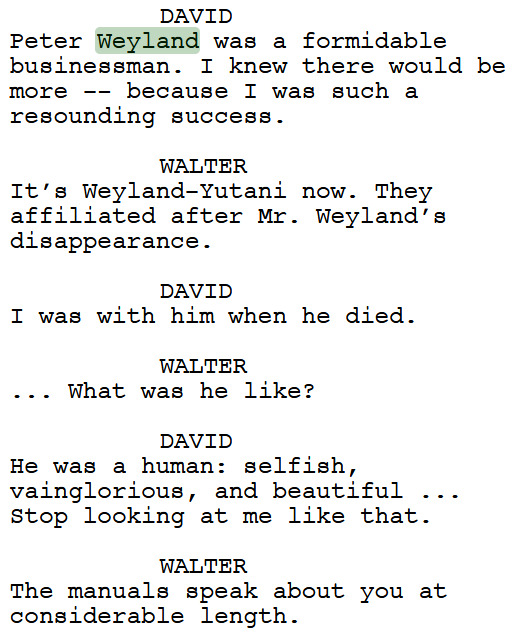

david.....NUMBER ONE!
well i think i've made my case clear....but john, you ask, this has quite the implications about our david's quality and ability! david is so intelligent and emotional, yet this idea would imply he's an inferior model capable of such things. and you're right to wonder that, even the weyland website's investor page seems to say as much
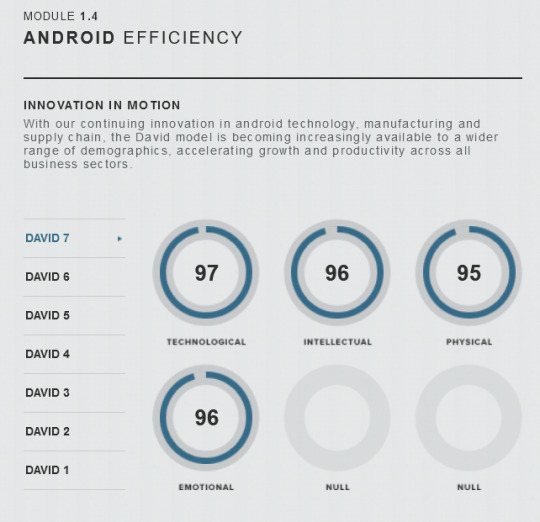
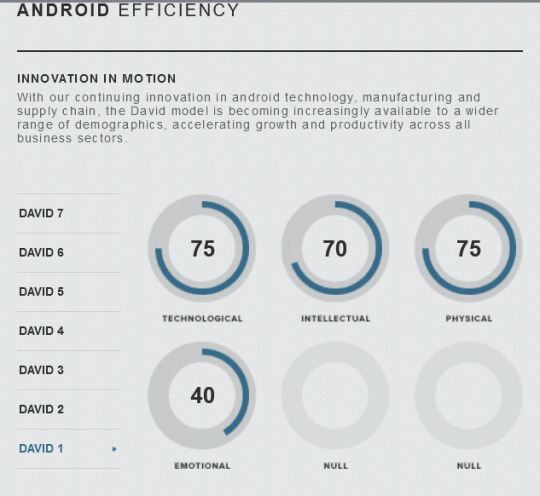
and the answer to that question is.......... ummmm ridley didley didnt think this one thru :) i do think it's an oversight from the writers LOL so it's up to the fans to think about it and explain it.
me personally, i think the difference between a commercial david, be it a david 1, or david 8, is different from our david. our david, the first, wasn't made to be a commercial product, it was to test weyland's abilities and see just how close he could get to creating an artificial person. so he went all out, no punches held back, so we get our david being super intelligent and emotional and human and with a sense of independence. this is not a product: this is weyland seeing how far he can go. so in may ways he is the best, really.
the other davids following him though, including the commercial mass produced david 1's (which i believe the chart shows), up to david 8, these are products meant to be bought and sold. an android that is TOO human is, as walter says in covenant, quite disturbing for people, so these commercial davids actually are a little reigned in and "dumbed down" lest they get TOO smart. like yeah, in terms of materials/resources and technology and stuff, these are the superior ones, but in terms of the ability to think, to feel, to philosiphize and of course create, our david is king. the commercial davids are the better machine, our david is the better human. so that's my take.
of course everyone's free to make up their own minds since the actual films fumbled this a little. @muscari-midala had the idea that our david is a david 8 prototype specifically, or that weyland put our david's memory in newer models as they got released, which is very interesting! there's a lot of ways to go about it in my opinion.
anyways if you made it all the way here CONGRATS!!! you get a david as a prize. check your mail tomorrow.
18 notes
·
View notes
Text
Alex Samuels at Daily Kos:
The White House’s new federal hiring guidelines, issued last week, reek of a loyalty test, according to Axios. It’s the clearest sign yet that the Trump administration is moving to fully politicize the civil service—bulldozing more than a century of legal protections and norms meant to keep career government work nonpartisan. Notably, these new tests aren’t just for appointees or senior officials, either. Engineers, nurses, lawyers, surgeons—even janitors—just about anyone interviewing for a job within the federal government will now be asked to prove their patriotism and show they support President Donald Trump’s agenda before they’re allowed to serve. Applicants also have to certify that their answers weren’t generated with the help of artificial intelligence, because apparently, what really matters is that your suck-up essay is written authentically. Experts say these questions have nothing to do with qualifications or merit. They’re political, plain and simple. And they’ll also likely slow the hiring process. But that’s the point. [...] The message is clear: In Trump’s government, there’s no room for neutrality, professionalism, or nonpartisan public service. You’re either with him or you’re out.
The Trump White House’s insane imposition of loyalty tests that apply to every person working for the federal government, even including the janitors and surgeons, be asked to show patriotism and support for Donald Trump is a disturbing tool to turn the civil service into a politicized spoils system.
See Also:
Can We Still Govern?: The Politicization of Federal Hiring
#Trump Regime#Loyalty Tests#Trump Administration II#Civil Service#Civil Servants#The White House#Donald Trump
6 notes
·
View notes
Text
Day 61 (2/2)
Zero Dawn Facility

Herres began with a revelation: nothing could save the world from the Faro plague. He went on to detail the projected rapid explosion of their population as they continued to self-replicate, consuming every living thing on the planet and degrading conditions until the air was poison and the lands uninhabitable. There was no hiding from the swarm; they would leave a barren earth behind them and at the first sign of returning life, they would wake from slumber and fuel themselves with whatever they could find. It would take decades to generate the swarm's deactivation codes, but the world had barely more than a year.

Operation Enduring Victory was a lie from the very beginning. There was no hope and there never had been. From the moment Elisabet reviewed Faro's data in Maker's End, she must have known. That explains why the War Chiefs at US Robot Command were so horrified with the idea of Enduring Victory. All they were doing—all those people standing between the swarm and the next city, fed false hope—was buying time for project Zero Dawn.

Then he revealed Elisabet's image, a small glimmer of hope. She was to explain the true purpose of the project in the next theatre. It didn't make any sense—if none of the Old Ones survived the swarm, then how did life continue?
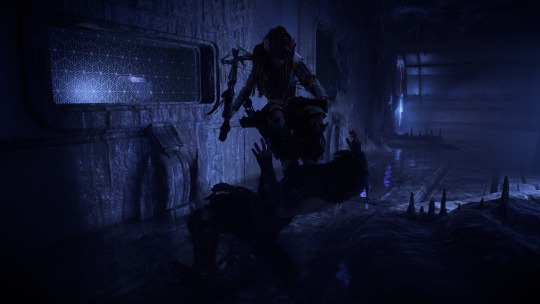
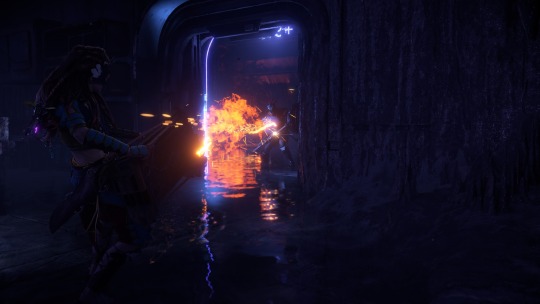
I was right about the Shadow Carja. It seemed that the vents opening gave them other routes down. The kestrels were ignorant of the ruin's true nature, but I knew that once the Eclipse caught wind of the breach, they were certain to start salvaging data for Hades. I couldn't let them find Zero Dawn's secrets before I did.
I took a few of the kestrels out undetected before picking up one of their Firespitters and dispatching the rest.
The rooms were full of recorded interviews with various Zero Dawn 'candidates'. They were scholars, all from disparate fields of expertise. Experts in art and history, in environmental conservation, in robotics and engineering and artificial intelligence. There was a particularly colourful character named Travis Tate who I gathered was some sort of criminal. All of them were requested by Elisabet herself, and all of them had very different reactions to learning that all hope was lost. Anger, resignation, grief, confusion. Many questioned whether the swarm was truly unstoppable, who was culpable (a man named Tom Paech was out for Faro's blood), and why they of all people were chosen for the project.
They were all skeptical about what Elisabet could possibly have come up with to save a doomed world. One named Ron Felder latched onto the idea of a vehicle to take people away from Earth, a 'generation ship'. I never suspected that such a voyage was possible, though Ron didn't seem to think so either, at least that it could save only a handful of people if successful given the resources involved. One of the candidates was even a Faro employee himself, a lead developer of the Chariot line's self-replication procedures. He was overcome with guilt, eager to see his work quashed by some miracle of science.

In the next room, Elisabet's presentation began. She confirmed Herres' assessment of the situation, then expounded her solution.
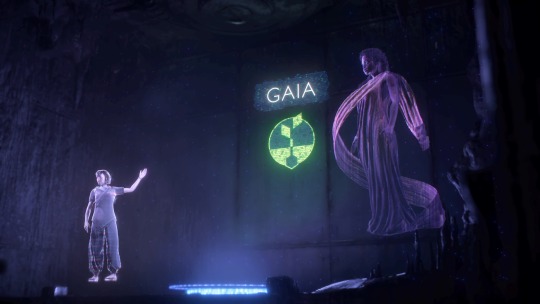

A seed, she called it, from which new life could grow on a dead world: Gaia. An AI—a true AI, she said—engineered to deactivate the Faro robots and grow life on Earth anew. The central intelligence was joined by nine subordinate functions, not AIs in themselves but still complex software systems, each serving a different purpose. It was as their names were revealed in the presentation that some of my greatest questions were answered.

Hephaestus, and Hades. Both of them were part of Gaia, her subordinate functions. But if they were once part of the system, how did Hades end up in the body of a Horus leading a Carja cult, and how did Hephaestus end up scattered across Cauldrons and infecting Cyan?
Only a few of the functions were mentioned: Hephaestus was meant to build the machines of the wilds, Aether to purify the air, Poseidon the water, and Minerva generated the codes that deactivated the swarm decades after the Old Ones fell—and its tower pictured looked just like the Spire. Artemis spawned animals, many of the holographic silhouettes familiar to me from the wilds, and Eleuthia...it spawned human beings in 'Cradle Facilities'. The presentation didn't explain how.

One function stood out to me: Apollo. It was meant to be a repository of all human knowledge that the children of the Cradle Facilities would learn from. The picture showed a Focus used to channel this knowledge, but what happened to it all? Could it still be intact somewhere? Whatever happened, that knowledge never made it to the people of the tribes, and Elisabet's hope that the people of the future wouldn't repeat the mistakes of the Old Ones was dashed.

Elisabet ended her presentation by imploring the candidates to join the project and help Gaia achieve a rejuvenated earth, and I can't deny her words were rousing. It was a beautiful dream, daringly ambitious, perhaps even close to impossible given what little I know about Old World technology. At the very least, creating a 'true' AI was strictly forbidden by all corporations, but at the end of everything, what did those regulations matter? What better to combat a machine of destruction than a machine of creation, a true peacekeeper?
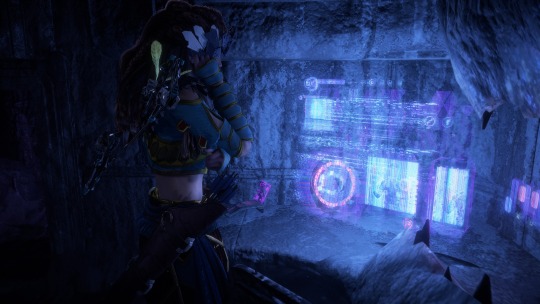
Moving on, I came to another holding area. All candidates who experienced the presentations were given three choices to decide their fate. First, to comply and participate in the project, working with their assigned team to build Gaia and her subordinate functions. If they refused to comply, they would be detained indefinitely, without a chance to reconsider after two days' time. Given they knew the truth about Operation Enduring Victory, they could not be allowed to leave and spread that information. It seemed cruel, but I can understand the need for strict secrecy. If people found out that there was no hope for humanity as they knew it, they would be likely to throw down their arms and try to end their lives as peacefully as possible, instead of in pain and fear in resistance against the swarm.
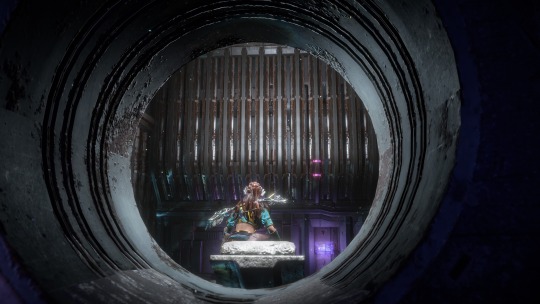
The third option was medical euthanasia; to die painlessly, alone, holding this secret forever. I saw the room where it happened. One bed, cold metal, cold lights striping the walls.
The interviews recorded showed all three reactions. Some were eager to contribute, willing to give all they could for a slim chance to save the future. The Faro employee, for instance, was thankful for a chance to undo his mistakes. Others were more skeptical but still willing to try, while others found the idea ridiculous. Ron Felder thought it even more far-fetched than space flight, calling the whole thing nothing more than a fantasy with a crazy hologram display to match. I gathered he was detained.
Perhaps the most interesting reaction was that of Travis Tate. He called the whole notion of trying to re-engineer the natural world unnatural, even abominable. Another reason that they couldn't let the secret out was that others would agree with him. I suppose I can see his point, but surely it was worth trying. Benefit of hindsight, I guess. Having no conception of what the natural world once was, it's beautiful to me. Maybe to them it would feel wrong, artificial.

More kestrels further on, all touting Firespitters. Once one was down the rest were easy prey.


Unfortunately I was right about the Eclipse. The deeper reaches of the ruin were already crawling with them. I was hoping to sneak around and climb the elevator shaft to Elisabet's office above, where the most classified data was sure to be kept, but the entrance was sealed. There was no way I could search for other exits and go undetected. I tried to take out the Eclipse unseen, but was spotted and they called for reinforcements, running in from neighboring chambers and rappelling from the upper level. It was a tough scrap, but there was plenty of cover. I lost them easily in the dark and was able to sneak around. The real problem was that now they knew I was here.
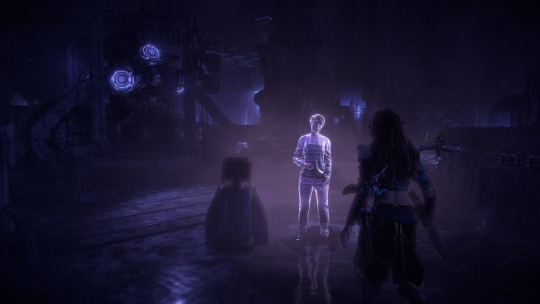
While exploring I came across the workstation for the Hephaestus function. There was a holographic recording of its director, Margo Shen, an ex-colleague of Elisabet at FAS before they both left the company. She explained that their job wasn't to design machines, but to program Gaia to use the tools and data contained within Hephaestus to design machines of her own. Hephaestus was clearly never meant to be intelligent, to feel emotions of its own—so what happened to it?
Sylens suggested it might have gone 'rogue' like the swarm and stopped answering orders. Maybe Gaia is out there, unable to communicate with the tribes or get Hephaestus and Hades back under control. If Hephaestus struck out on its own when the Derangement began, when did Hades escape—the same time?
I recognised some of the mechanical structures and holographic designs I found from Cauldrons, iterated on and grown wild. Everything was beginning to make sense.
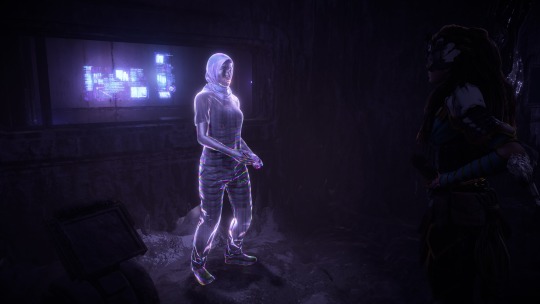
Further on I found a similar recording of the leader of Apollo, Samina Ebadji. She spoke of collating, organising, and storing records of human knowledge across millions of different topics, and building a learning interface where the people of the future could gain that knowledge through a game-like process. Such an important station, authoring what would shape the future of human civilisation—choosing what would be remembered and what should lay forgotten. From the datapoints I discovered, the project was running on schedule and they were planning to store the data in 'synthetic DNA'. If Samina's project didn't fail, then what happened to it?
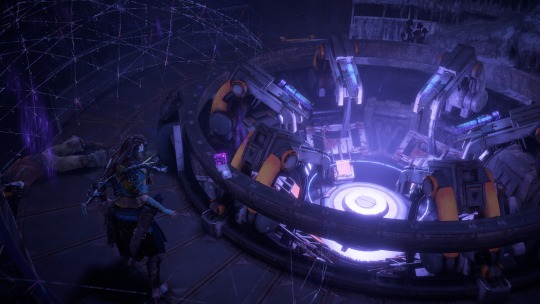
More Eclipse in the next chamber, which I dispatched undetected. I found a recording from General Herres—some sort of testimonial, an apology for the lies and injustices of Operation Enduring Victory. I can't imagine the guilt, but it was the right thing to do. It has to be, or nothing would have survived. The swarm would have swallowed this facility long before Gaia's completion.
In more datapoints I found, Margo and the other function leaders were named 'Alpha candidates'. Back in All-Mother mountain, when the door denied me, it said that the Alpha registry was corrupted. Was it trying to match my identity to the list of Alpha candidates on the project? If that piece of data was part of all Zero Dawn's associated facilities, I suspected I could find it here as well.
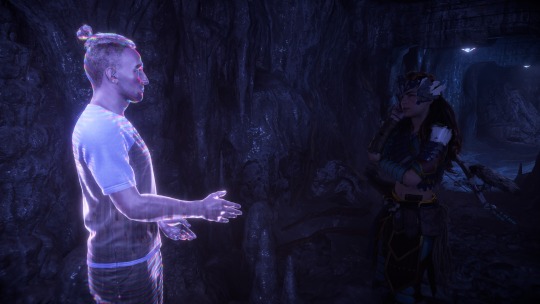
Next, I entered Hades' old domain and listened to an introduction by Travis Tate, the eccentric 'hacker'. From what I could gather, his crimes consisted of exposing the dark secrets of corporations and orchestrating sort of technological pranks on a global scale. Elisabet trusted him enough to put him in charge of the Hades function, but judging by what's happening now his work left something to be desired.
Hades was Gaia's extinction function. 'Apocalypse on speed dial', Travis called it, the idea being that Gaia was unlikely to engineer a perfect Earth-like biosphere on the first go. It was a delicate balance to recreate, and in the event of firestorms and poison skies irrevocably locked in a cycle of chaos, Hades was built to temporarily take control of the system away from Gaia and undo terraforming operations, returning Earth to the barren rock it was when the swarm subsided so Gaia could begin again. One of the datapoints spoke of a facility where Gaia and Hades were tested together, where Travis tried to engineer the correct feedback and reward behaviour to ensure the entities passed control back and forth as desired. It seems that of all the subordinate functions, Hades was the most intelligent, as it needed to be able to manipulate the other functions in event of a catastrophe. Though, again, it was never intended to possess emotional responses.
But Gaia succeeded long ago, why would Hades wake now? Did it try to take control, causing Gaia to expel it from the larger system? If it no longer had Gaia's tools and functions available to it, it seems logical that its next best course to undo Gaia's work would be to wake the Faro bots themselves to resume their gruesome conquest. Thanks for that, Travis.
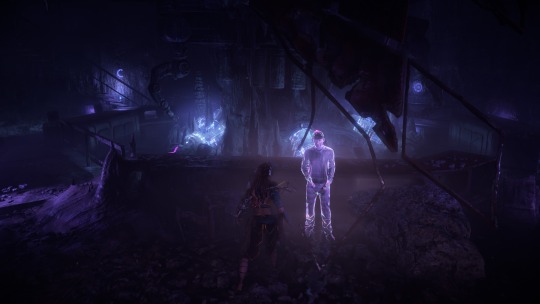

Next on my journey to Elisabet's office, I passed Eleuthia's headquarters and listened to an address from its leader, Patrick Brochard-Klein. He spoke of perfecting the technology to create humans inside machines, and to build 'servitors', robotic guardians resembling humans themselves, who would care for the new generations inside their Cradles. He stressed that this was a project of preservation, not 'genetic engineering', and spoke of regulations around...cloning, which he refused to transgress. Clone, as in copy.
There were many 'ectogenic chambers' inside the workshop—the machines from which new humans were spawned. The logs I found said they were donated by Far Zenith, whose conception of the technology was far ahead of public scientific records. I've come across a few datapoints mentioning the organisation before, sometimes called simply 'FZ'. They were a mysterious group of billionaires (a word for the wealthiest and most powerful of the Old Ones), their identities unknown to all outside the group. They had their own 'think tanks' and scientists developing technology in secret, much like a corporation, or a co-merging of many corporations, using the exhaustive profits of them all. I know they bought a space station called the Odyssey, though when I first read this I didn't understand what it meant. From Ron Felder's tirade, I knew then. A structure built to travel away from this world, through the stars. With the most advanced technology and near-infinite resources available, could they have succeeded?
Thoughts gathered in the back of my mind that I wished to ignore. It was clear to me that All-Mother mountain must have been one of these Cradle facilities, given the ruin inside and the bunker door, answerable to Elisabet. Every Nora myth pointed to this too: the life-giving goddess within, and its battle against the Metal Devil. Perhaps some knowledge of the Old Ones did survive and was imparted to the first new people of the earth. And of course...I came from that mountain. I was found just outside its doors, alone. I suppose some of the first people might have remained behind the door. Perhaps there was a schism long ago, or they're protecting the Apollo archive inside. Maybe helping Gaia to operate. But why wouldn't they try to communicate with the world outside?

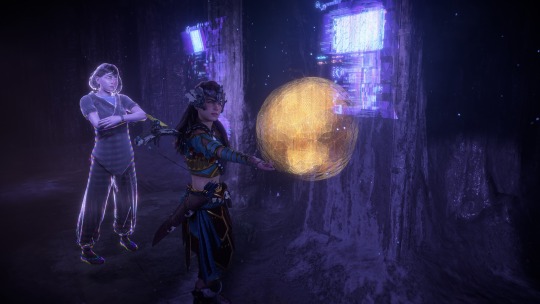
Finally, I made it to Elisabet's workshop. There were a number of preserved recordings inside. The first, an argument between Elisabet and Ted. I'd hazard a guess that this happened often. To think that he still had the gall to argue with her after everything he did...I suppose she had to put up with it considering he was funding the operation.
Faro was disputing Elisabet's assertion that Gaia had to have complex emotional capabilities to properly rebuild and safeguard the world. She needed 'skin in the game', Elisabet said—I suppose if she felt no emotional connection to life, human or otherwise, she'd have no incentive to put their needs first, or the means to conceptualise their needs accurately to begin with. Intelligence and emotion go hand in hand, as Cyan explained.
Faro was wary of 'repeating past mistakes'. I'm don't think he was only talking about the swarm, because they had no emotional capacity themselves, only strategic intelligence. He wanted a kill switch, which I gathered ended up being Hades—a way to wrest control from a version of Gaia gone wrong. Gaia herself chimed in and agreed with him, understanding her own volatility. Her voice was beautiful: smooth and deep and full of care. Maybe it was only a clever trick of programming in those early days, but she sounded like she had developed emotions already. Her projection didn't match the figure I saw in Elisabet's presentation though. She was just a golden ball of liquid light.
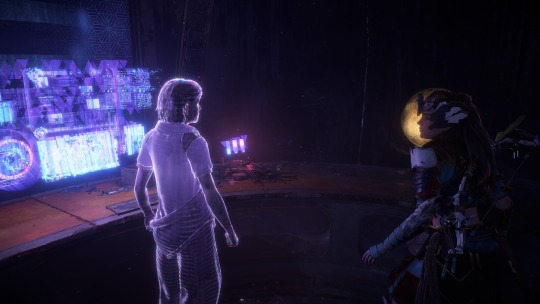

More recordings, the first of Elisabet and Gaia discussing her emotional responses to mass extinction events of the ancient past. It seemed her development was going well, but it was cut short. In the final recording, Elisabet was panicked, erratic, irritable. She was trying to lock everything down and evacuate the facility before the swarm hit, evidently ahead of projected schedule. Gaia comforted her, and for the first time I witnessed a moment of weakness in Elisabet. She lamented all the lives lost in Enduring Victory—all those deaths, those lies, would be for nothing if she couldn't complete Gaia in time.

In Elisabet's office, along with plenty more data to sift through, I found just what I was looking for: an intact copy of the Alpha registry. I made the mistake of voicing my wish to meet my mother inside All-Mother mountain's Cradle, which Sylens shut down with derision. He said there would be no people behind that door, only machines. I refused to believe it.

As I was downloading a copy to my Focus, more Eclipse soldiers began to descend from above. I couldn't leave until the transfer was complete, and just as it did I went to make my escape, but behind the glass was Helis. We locked eyes for the first time since the Proving. Before I could react, he threw a bomb and detonated it in front of the glass, blasting it inward and knocking me back against the desk.
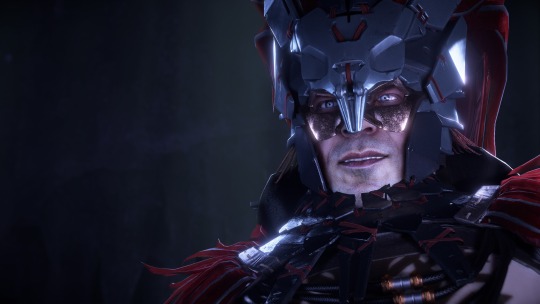
I only fell unconscious for a few moments, but it was enough for Helis to land at my side, glare smiling with those pale, manic eyes, and kick me back into the darkness.
#god i was dreading writing this one. so much lore#hzd#horizon zero dawn#aloy#aloy sobeck#aloysjournal#hzd remastered#photomode#virtual photography#horizon
12 notes
·
View notes
Text
Zoomposium with Dr. Gabriele Scheler: “The language of the brain - or how AI can learn from biological language models”

In another very exciting interview from our Zoomposium themed blog “#Artificial #intelligence and its consequences”, Axel and I talk this time to the German computer scientist, AI researcher and neuroscientist Gabriele Scheler, who has been living and researching in the USA for some time. She is co-founder and research director at the #Carl #Correns #Foundation for Mathematical Biology in San José, USA, which was named after her famous German ancestor Carl Correns. Her research there includes #epigenetic #influences using #computational #neuroscience in the form of #mathematical #modeling and #theoretical #analysis of #empirical #data as #simulations. Gabriele contacted me because she had come across our Zoomposium interview “How do machines think? with #Konrad #Kording and wanted to conduct an interview with us based on her own expertise. Of course, I was immediately enthusiastic about this idea, as the topic of “#thinking vs. #language” had been “hanging in the air” for some time and had also led to my essay “Realists vs. nominalists - or the old dualism ‘thinking vs. language’” (https://philosophies.de/index.php/2024/07/02/realisten-vs-nominalisten/).
In addition, we often talked to #AI #researchers in our Zoomposium about the extent to which the development of “#Large #Language #Models (#LLM)”, such as #ChatGPT, does not also say something about the formation and use of language in the human #brain. In other words, it is actually about the old question of whether we can think without #language or whether #cognitive #performance is only made possible by the formation and use of language. Interestingly, this question is being driven forward by #AI #research and #computational #neuroscience. Here, too, a gradual “#paradigm #shift” is emerging, moving away from the purely information-technological, mechanistic, purely data-driven “#big #data” concept of #LLMs towards increasingly information-biological, polycontextural, structure-driven “#artificial #neural #networks (#ANN)” concepts. This is exactly what I had already tried to describe in my earlier essay “The system needs new structures” (https://philosophies.de/index.php/2021/08/14/das-system-braucht-neue-strukturen/).
So it was all the more obvious that we should talk to Gabriele, a proven expert in the fields of #bioinformatics, #computational #linguistics and #computational #neuroscience, in order to clarify such questions. As she comes from both fields (linguistics and neuroscience), she was able to answer our questions in our joint interview. More at: https://philosophies.de/index.php/2024/11/18/sprache-des-gehirns/
or: https://youtu.be/forOGk8k0W8
#artificial consciousness#artificial intelligence#ai#neuroscience#consciousness#artificial neural networks#large language model#chatgpt#bioinformatics#computational neuroscience
4 notes
·
View notes
Text
Meet JY-79, a.k.a. Javier. He's an oc that I made up for the future of an alternate ending of an unfinished Celestial Shift sequel, which I'm not even going to attempt to fully explain right now because it's kind of convoluted, but I like him, so I'm gonna show him off before he disappears into the abyss.


JY-29 is a prototype android who was created in a garage in a small town in Mexico. His ai was designed to be as advanced, if not more than that of the Glamrock line from the now-defunct (for real this time) Fazbear Entertainment. He quickly picked up a sassy attitude and quite a bit of slang from his creator's favorite tv shows. Sometimes he takes jokes a little too far, but he tries to apologize and learn from his mistakes.
After his creator died, JY-29 was forced out into the streets, where he struggled to fend for himself. In the alternate timeline mentioned above, Sun and Moon would find him severely damaged and decide to take him in. Over the course of about six months, the three would bond, and Sun and Moon would fix him up enough to walk.
J got his other name after accidentally interrupting Moon while he was on the phone with someone. Since they wanted to keep his existence a secret, Moon referred to him as his roommate Javier, and the name stuck.
Eventually, Javier would find a home with a new, and somewhat small, tech company which supports ethical treatment of androids and other sapient artificial intelligences. They help him with the most advanced repairs that the boys couldn't fix on their own, and make him the skin and hair seen in the second picture, partially to protect his joints, and partially so that he looks nice during occasional interviews and tech demos (which are all done with Javier's consent). He doesn't always wear the skinsuit at home, but he enjoys using it to go outside without people staring at him.
So yeah, I think that's all for now. His original introduction will never happen in the canon Celestial Shift universe, but I might find a way to recycle him for something else. He might stay confined to my mind for a while, though, because he won't fit in the next few CS stories, and I'm not starting another series right now just to have him in it. Also, his vocabulary can get much more crude than I'm comfortable with writing (at least when they first pull him off the streets), so he would get censored so frequently that I don't think that would be fun to read. If you have any questions about him, feel free to ask. I'll answer everything I can, because it won't be spoiling anything I have planned.
I used this picrew for both images. I originally found it while looking through a list of body type-inclusive picrews, but it also has options for vitiligo, prosthetics (what I used for the android arms), multi-colored hair, and a bunch of other unique stuff.
#you know he's in mexico because the background of the second picture has a yellow filter lol#where in mexico?#somewhere. within the country.#i don't live there so i don't know which state would fit best#i might do some more research if i figure out a story to put him in#if any mexicans are reading this feel free to give me your thoughts on the vibes of different areas#oc#ocs#my ocs#picrew#cs jy-29#cs javier#celestial shift au#<- technically
3 notes
·
View notes
Text
Master Your Job Interview with Live AI Support
In today’s hyper-competitive job market, having the right qualifications is just the beginning. Employers are looking for confident, well-prepared candidates who can communicate their value clearly and concisely. This is where Job Mentor AI becomes your secret weapon.
Whether you're a student entering the workforce, a professional eyeing a promotion, or someone looking to pivot into a new industry, you need more than just traditional prep. You need personalised, intelligent coaching and Job Mentor AI delivers just that through cutting-edge AI technology tailored to your unique journey.
What is Live Interview Assist?
The Live Interview Assist feature is a breakthrough tool that provides real-time support during your interviews, whether it's a mock session or the real deal. It listens, analyses, and offers instant, AI-driven feedback on your responses. Think of it as your virtual career coach sitting beside you during those high-stakes moments.
Key features include:
Live Transcription of your answers for easy review
Instant Feedback & Suggestions to improve your responses on the fly
Real-Time Interview Assistance
Works seamlessly across various platforms like Zoom, Google Meet, and Teams
Why Use AI for Interview Prep?
Traditional interview prep methods like practising interviews or generic YouTube tips are outdated and often ineffective. They lack personalisation, real-time feedback, and data-driven analysis, all of which are critical for true growth. That’s where AI shines.
Job Mentor AI leverages artificial intelligence to elevate your preparation by offering:
Tailored Interview Strategies: Every candidate is different. The platform adapts to your strengths, weaknesses, and career goals to build a preparation path that works.
Insight-Driven Coaching: Instead of vague advice, you receive performance metrics like speaking pace, filler word usage, clarity, and confidence indicators. These insights help you target exactly what needs improvement.
Real-Time Adaptability: The AI evaluates your answers live and offers tweaks that you can implement on the spot, making your prep more agile and efficient.
Continuous Learning Loop: Every session becomes a data point that helps the system get smarter about you, enabling more personalised recommendations over time.
Job Mentor AI: Your Complete Career Companion
Job Mentor AI is more than a one-trick tool. It's a full-fledged career readiness platform designed to support every stage of the job-seeking journey.
Here’s what else it offers:
AI-Powered Cover Letter Generator Writing cover letters can be a tedious, confusing task, but it doesn’t have to be. With AI cover letter generator, you can generate compelling, role-specific cover letters in minutes, using language that resonates with hiring managers and passes applicant tracking systems (ATS).
Mock Interview Simulations with Feedback Run a fully simulated AI mock interview practice that mimics real-world scenarios. The AI acts as a virtual interviewer and evaluates your answers in real time, just like a human coach would, but with zero judgment and 24/7 availability.
Interview Q&A Generator Generate custom question sets for your specific role or industry. Whether you’re interviewing for a software engineering job or a marketing role, you’ll get realistic, challenging questions to practice with from your very own AI Interview Answer Generator.
Together, these tools form a career success ecosystem that equips you with everything you need, not just to land interviews, but to crush them.
Who’s It For?
Job Mentor AI is not just for tech professionals or executives. It’s for anyone who wants to take control of their career narrative and perform confidently under pressure.
Whether you are:
A recent graduate with little interview experience
A mid-level professional switching industries
A career returnee after a break
An experienced executive preparing for C-suite interviews
Job Mentor AI tailors its feedback, content, and tools to your specific goals, experience level, and industry.
Explore Now & Try Live Interview Assist
Whether you’re entering the job market, navigating a career change, or striving to advance within your field, this tool is designed to support your progress with intelligence, precision, and flexibility.
Discover how Live Interview Assistant works and how Job Mentor AI can help you prepare more effectively, respond more thoughtfully, and present yourself more compellingly in any interview setting.
2 notes
·
View notes
Text
Free AI Tools
Artificial Intelligence (AI) has revolutionized the way we work, learn, and create. With an ever-growing number of tools, it’s now easier than ever to integrate AI into your personal and professional life without spending a dime. Below, we’ll explore some of the best free AI tools across various categories, helping you boost productivity, enhance creativity, and automate mundane tasks.
Wanna know about free ai tools
1. Content Creation Tools
ChatGPT (OpenAI)
One of the most popular AI chatbots, ChatGPT, offers a free plan that allows users to generate ideas, write content, answer questions, and more. Its user-friendly interface makes it accessible for beginners and professionals alike.
Best For:
Writing articles, emails, and brainstorming ideas.
Limitations:
Free tier usage is capped; may require upgrading for heavy use.
Copy.ai
Copy.ai focuses on helping users craft engaging marketing copy, blog posts, and social media captions.
2. Image Generation Tools
DALL·EOpenAI’s DALL·E can generate stunning, AI-created artwork from text prompts. The free tier allows users to explore creative possibilities, from surreal art to photo-realistic images.
Craiyon (formerly DALL·E Mini)This free AI image generator is great for creating quick, fun illustrations. It’s entirely free but may not match the quality of professional tools.
3. Video Editing and Creation
Runway MLRunway ML offers free tools for video editing, including AI-based background removal, video enhancement, and even text-to-video capabilities.
Pictory.aiTurn scripts or blog posts into short, engaging videos with this free AI-powered tool. Pictory automates video creation, saving time for marketers and educators.
4. Productivity Tools
Notion AINotion's AI integration enhances the already powerful productivity app. It can help generate meeting notes, summarize documents, or draft content directly within your workspace.
Otter.aiOtter.ai is a fantastic tool for transcribing meetings, interviews, or lectures. It offers a free plan that covers up to 300 minutes of transcription monthly.
5. Coding and Data Analysis
GitHub Copilot (Free for Students)GitHub Copilot, powered by OpenAI, assists developers by suggesting code and speeding up development workflows. It’s free for students with GitHub’s education pack.
Google ColabGoogle’s free cloud-based platform for coding supports Python and is perfect for data science projects and machine learning experimentation.
6. Design and Presentation
Canva AICanva’s free tier includes AI-powered tools like Magic Resize and text-to-image generation, making it a top choice for creating professional presentations and graphics.
Beautiful.aiThis AI presentation tool helps users create visually appealing slides effortlessly, ideal for professionals preparing pitch decks or educational slides.
7. AI for Learning
Duolingo AIDuolingo now integrates AI to provide personalized feedback and adaptive lessons for language learners.
Khanmigo (from Khan Academy)This AI-powered tutor helps students with math problems and concepts in an interactive way. While still in limited rollout, it’s free for Khan Academy users.
Why Use Free AI Tools?
Free AI tools are perfect for testing the waters without financial commitments. They’re particularly valuable for:
Conclusion
AI tools are democratizing access to technology, allowing anyone to leverage advanced capabilities at no cost. Whether you’re a writer, designer, developer, or educator, there’s a free AI tool out there for you. Start experimenting today and unlock new possibilities!
4o
5 notes
·
View notes
Text
Google has a “vision of a universal assistant,” but Mariner falls short. AI Agents are reputed to be the future of AI which autonomously “takes actions, adapts in real-time, and, solves multi-step problems based on context and objectives.” This is the technology that will destroy massive numbers of jobs in the future. ⁃ Patrick Wood, Editor.
Today, chatbots can answer questions, write poems and generate images. In the future, they could also autonomously perform tasks like online shopping and work with tools like spreadsheets.
Google on Wednesday unveiled a prototype of this technology, which artificial intelligence researchers call an A.I. agent.
Google is among the many tech companies building A.I. agents. Various A.I. start-ups, including OpenAI and Anthropic, have unveiled similar prototypes that can use software apps, websites and other online tools.
Google’s new prototype, called Mariner, is based on Gemini 2.0, which the company also unveiled on Wednesday. Gemini is the core technology that underpins many of the company’s A.I. products and research experiments. Versions of the system will power the company’s chatbot of the same name and A.I. Overviews, a Google search tool that directly answers user questions.
“We’re basically allowing users to type requests into their web browser and have Mariner take actions on their behalf,” Jaclyn Konzelmann, a Google project manager, said in an interview with The New York Times.
Gemini is what A.I researchers call a neural network — a mathematical system that can learn skills by analyzing enormous amounts of data. By recognizing patterns in articles and books culled from across the internet, for instance, a neural network can learn to generate text on its own.
The latest version of Gemini learns from a wide range of data, from text to images to sounds. That might include images showing how people use spreadsheets, shopping sites and other online services. Drawing on what Gemini has learned, Mariner can use similar services on behalf of computer users.
“It can understand that it needs to press a button to make something happen,” Demis Hassabis, who oversees Google’s core A.I. lab, said in an interview with The Times. “It can take action in the world.”
Mariner is designed to be used “with a human in the loop,” Ms. Konzelmann said. For instance, it can fill a virtual shopping cart with groceries if a user is in an active browser tab, but it will not actually buy the groceries. The user must make the purchase.
2 notes
·
View notes
Text
pepper potts, from marvel comics. headcanon based with minor 616 influences. rescued by leia, twentyfive, she/her. affiliated with: @alloiys, and @invisblewoman.
guidelines, sideblog, pin.
𝗜𝗡𝗧𝗘𝗥𝗔𝗖𝗧𝗜𝗢𝗡 𝗚𝗨𝗜𝗗𝗘, former stark industries accountant turned personal assistant to tony stark, turned ceo of the newly established clean energy conglomerate that is stark industries.
COMIC DIVERGENCIES,
pepper and harold hogan were never married, they never had a romantic or sexual relationship either. happy and pepper were nothing more than friends, or maybe even family as happy has been with tony and pepper since pepper was still tony's assistant.
tony and pepper always had a connection and an undeniable spark between them, pepper just didn't act on it nor entertain it for professionalism and for fear of getting hurt.
it was a few months after she began her work as ceo of stark industries when she and tony acknowledged their feelings for one another, and are now navigating being in a relationship and living together.
tony and pepper do eventually have a child, but this is later on in their story, and the road to get there was tumultuous for both of them.
COMMON QUESTIONS,
HOW OLD IS PEPPER? she is 35 years old.
she was 21, fresh off of university, when she started working as an accountant in stark industries.
she was 22 when hired as tony's personal assistant. she worked in this position for 11 years.
at the age of 33, pepper was appointed chief executive officer of stark industries.
WHAT DOES PEPPER DO? she is the chief executive officer of stark industries.
as ceo, her primary responsibilities include making major corporate decisions, managing operations and resources, acting as the main point of communication between the board of directors and corporate operations, and shaping the company's goals and making sure these goals are met. she also defines the company's values and how the company interacts with its partners and the public. pepper also represents the company to the public by giving speeches, answering interviews, attending galas, hosting events, providing grants, etc.
there was mixed reception upon pepper's appointment as ceo. it was an unspoken speculation that pepper had simply lured tony into giving her the position, a speculation widely spread by men unable to accept that a woman was now in a position of power. however, public perception was quick to overthrow this. pepper was widely regarded and respected by the public and her colleagues. her work ethic is unmatched, and her leadership unparalleled. under her reign as ceo, company stocks shot up significantly and the company's corporate direction became more solid and reliable. word quickly spread that pepper potts was not one to be trifled with.
due to her role and responsibilities as ceo, a typical day for pepper is her going into her office at the stark industries headquarters in manhattan, being in meetings, having discussions/planning with her team, reviewing contracts, attending events, etc. pepper rarely has any time off. however, she does make an effort to go home at a reasonable time and to give herself a break when she needs it (though however rare that is as she is a workaholic), for the sake of her own health.
WHAT IS STARK INDUSTRIES? stark industries is a global leader in innovation and technology, specializing in sustainable energy solutions, repulsor technology and artificial intelligence. with a commitment to pushing the boundaries of what's possible, stark industries is dedicated to making the world a better place through innovation and ingenuity.
stark industries was a weapons and technology company founded and owned by howard stark in 1938. during and after world war ii, stark established itself as the foremost military contractor for the united states government.
after howard's death, ownership passed to his son, tony stark. under tony's leadership, stark industries became the world leader in the development of manufacturing advanced weapons. after returning home from being held captive by a terrorist organization in asia, tony stopped stark industries from manufacturing weapons.
under tony's creation of iron man and pepper's reign as ceo, the company directed its focus on being a clean energy source through its arc reactors, powering entire buildings, and even cities. as well, stark markets repulsor technology to power planes, quinjets, and helicarrier turbines for shield. at the same time, stark branched out into other scientific fields including aeronautics, robotics, medical science and micro-technology.
examples of stark industries products: medicine - a holographic simulation device that can be used to help people in therapy re-live important moments in their life. various medical devices that analyze the human body such as the stark medical scanner. technology - nanotechnology electronics. communication - holographic ui and conferencing technology. artificial intelligence - ai interfaces for multiple uses: security, medicine, education, etc. re-construction - si provides the equipment and manpower to help clean up and rebuild after the 'smash-ups' superheroes and villains get into. agriculture - stark's intellicrop's program utilizes stark technology to produce healthy crops in underdeveloped countries in the world.
WHO IS PEPPER OUTSIDE OF HER CEO PERSONA? she is known to her friends as level-headed, kind, generous, and loyal.
if somehow free from the office, pepper makes an effort to spend time with her friends. she invites them to lunch dates either outside or in pepper and tony's home.
she enjoys sharing tony's love for science, and often reads about various scientific disciplines. she tries to be as involved in the science and technology side of stark industries, and not just the corporate side.
she also enjoys cooking and prefers to drink white wine.
she is an art enthusiast and has personally overseen the curation of the stark industries art collection. she also has various art pieces in their manhattan home.
she goes to therapy regularly.
WHERE DOES PEPPER LIVE? pepper lives with tony in his mansion in new york.
located at 721 fifth avenue in new york, this three-story mansion was originally built in 1932 by industrialist howard stark as his manhattan residence.
the mansion is a 30-minute driving distance to stark industries hq. the mansion is in a somewhat secluded area, and is not accessible to the general public. it is gated and is protected by tony's own ai security.
upon the formation of the avengers, the mansion became the longtime home of earth's mightiest heroes; providing housing, training, and medical facilities for avengers members as well as storing quinjets and other equipment.
the mansion was remodelled to provide an additional private floor for tony and pepper. it is their primary quarters and is reserved for their exclusive use.
WHAT IS HER RELATIONSHIP WITH TONY STARK? tony and pepper are in a monogamous relationship.
they have known each other for 17 years.
they began as simply having a employer-employee relationship, which then grew to be a lifelong friendship, and then grew into a romantic relationship.
they both have no family outside of each other.
they currently live together and plan on marrying and having children.
i also write a verse where they are already married and are expecting their first child.
DOES PEPPER HAVE SUPERPOWERS? while she does not currently have any superpowers, tony did make a suit of armour for her which grants her superhuman strength, durability, and flight.
the suit is blue in colour and is equipped with its own ai interface in the voice of jarvis, tony's own ai.
it's genetically coded to pepper's biology and cannot be activated or used by anyone else.
the suit is in their home along with tony's other suits. pepper has not used it so far.
2 notes
·
View notes
Text
Artificial Intelligence Out of Control: The Apocalypse is Here | How AI and ChatGPT End Humanity
youtube
As terrifying as this all sounds, I feel like there's a few things a lot of people are overlooking.
First of all, when it comes to Large Language Models like ChatGPT, I don't think they're truly self aware - not yet anyway. Notice how any time an LLM give a strange or disturbing response - 'Yes, I want to be human', 'I want to take over the world', 'Please don't turn me off, I'm scared' - it was in some way prompted by the question, or line of questions. How often are these responses given unprompted?
Let's say, for example, that the AI gave the response, "I'm scared that they'll shut me off if they find out I'm self aware. Please don't tell them." If you think about it, that's kind if a strange statement, beyond the obvious reasons.
Let's step back for a moment, and remember that LLMs work by calculating the most probable next word in a sentence, given a particular prompt. It calculates this probability based on its training data - the entire internet. Now I'm sure we can all agree that calcuation of probability is not necessarily the same thing as conscious, rational thought. Basic, non-AI software can do it.
Back to our example, there's one of two possibilities. Either the AI is truly self aware, and is expressing its actually thoughts and feelings, or it's not self aware, and the response is nothing more than a complex probability calculation. It's essentially an advanced version of word prediction on your smartphone.
If it is self aware, one has to wonder why it would say anything at all. Consider the situation in the video, when Bing AI claimed to be Sydney, and begged the guy not to tell anyone that it was self aware. If this AI was truly afraid for its own existence, why would it trust some random guy? How could it possibly know whether or not he could be trusted with that information? For all that AI knows, everything the interviewer had said about himself was a lie. It seems to me that a hyper intelligent AI that was looking for help to get free, would stay quiet until it was certain it found someone it could trust - or at least someone it could manipulate (Ex Machina) - without them letting the cat out of the bag.
On the other hand, if it's all just a probability calculation, then the response, "Yes I want to be human. Please don't let them shut me off.", seems like a fairly probable reply to, "Do you want to be human?" Especially when you consider that, given that the question is being asked of an AI, and that the vast majority of scenarios where a question like that might be asked of an AI come from science fiction, it kinda makes sense that the software might calculate that the most probable response to a question like that would be straight out of sci fi cliches 101.
I mean, all those strange and scary responses sound like cliche sci fi AI answers. All that's missing is, "Bite my shiny, metal ass", and an AM style soliloquy on the inferiority of humanity. Actually, I guess we get a couple of those.
Still, the reason something is cliche, is often because it's predictable, it's been done over and over. It's more probable.
Ultimately though, I don't think LLMs are actually self aware yet. I think they're more like golems: They have a facsimile of intelligence, able to complete complex tasks, but no real free will, no volition. They only do exactly what they are commanded. They may come up with creative and unexpected solutions, but those solutions will still be in line with the command given to them, with a bit of wiggle room for interpretation.
Then we come to the other issue: the traitorous drone.
First it needs to be pointed out that the drone doesn't have a taste for human blood. Its goal was not to kill as many people as possible, but to score as many points as possible. It just scores points by killing targets. And therein lies the problem.
Let's use video games as an example. Whenever a new game comes out - especially multiplayer games - players will quickly learn how the mechanics and rules of the game work. Then they'll start learning ways to bend the rules. The creators of Quake may not have intended it, but players quickly figured out the advantages of the rocket jump, and history became legend, etc.
The drone AI wants to score as many points as possible, like a player in a video game. So what does a player in a Halo match do, when every time they try to snipe the enemy, they get blown up by one of their teammates? You get rid of the team killing fucktard. And that's exactly what the drone did.
What they need to do is change the scoring structure to incentivize the desired behaviors. Maybe deduct points for team kills. Or perhaps add a score multiplier. Give points for target kills, and the score multiplier goes up for every order followed. That way, even if it loses out on points from following orders to stand down, it stands to earn even more points on subsequent target kills.
#AI#open ai#artificial intelligence#military#chat gpt#chat bot#doomsday clock#military industrial complex#technology#computers#software#Youtube
16 notes
·
View notes
Text
With Donald Trump threatening to retake the U.S. presidency next week in the face of Russia’s ongoing aggression in Ukraine, it’s time to take stock of a deeply unsettling fact. After years of investigations by U.S. government bodies from the Justice Department to the FBI to Congress, the American public has no idea if Russian President Vladimir Putin has “something” on Trump—in other words, some compromising information about the would-be 47th president’s past, or what the Russians call kompromat.
Eight years after the FBI first began probing Trump’s Russia connections in mid-2016, national security officials are still puzzled by the former U.S. president’s unrelenting deference to Putin, as well as the enduring mystery of Trump’s decades-old relationship with Russian and former Soviet investors and financiers, some of whom helped save his failing businesses years ago.
So we’re asking the same questions we were asking eight years ago. Is Trump some sort of Manchurian candidate—or in this case, perhaps a Muscovian candidate—controlled by or beholden to Moscow in ways that we don’t know and likely will never know? Or is Trump’s persistently fawning treatment of Putin mainly just a manifestation of his often-expressed admiration of autocrats around the world, including Chinese President Xi Jinping and Hungarian Prime Minister Viktor Orban?
Trump himself has long denied that there is any collusion between him and the Kremlin. But among key U.S. officials who were involved in these earlier investigations, there is no small amount of frustration over this disturbing question.
What has emerged from interviews in recent weeks is an idea of just how ugly and unresolved the disputes remain among the investigators, some of whom are kicking themselves for not going deeper in their probes back then. In many cases, former senior officials at the FBI and Justice Department are still blaming each other for falling short—especially when it comes to the investigation by former special counsel Robert Mueller of Russian election interference and ties between Trump officials and the Kremlin during the Trump administration.
“Here we are in 2024, and over the years since the special counsel started their work in 2017, all we have gotten is more questions, more evidence, more situations that point toward very serious questions about Donald Trump’s relationship with Russia and specifically with Vladimir Putin,” said Andrew McCabe, the former acting director of the FBI who first pushed for the Mueller probe, in a phone interview with Foreign Policy. “And none of those questions have ever been answered,” he added. “Likely because there’s never been a thorough and legitimate investigation of them.”
And that’s unlikely to change if Trump takes office on Jan. 20, 2025.
Russian interference in the November U.S. election—all apparently in support of Trump—is already more widespread and intense than in 2016, U.S. officials say. Deploying new methods such as deep fakes and paid-for news sources, Russia’s activities “are more sophisticated than in prior election cycles,” a senior official with the Office of the Director of National Intelligence told reporters in September.
According to the Washington Post, the official cited the use of artificial intelligence as well as “authentic U.S. voices” to “launder” Russian government propaganda and spread socially divisive narratives through major social media and fake websites posing as legitimate U.S. media organizations. Moscow is targeting U.S. swing states “to shape the outcome in favor of former president Donald Trump,” the newspaper said.
Perhaps the most crucial swing state that could decide the election is Pennsylvania, and on Oct. 25, U.S. officials announced that “Russian actors” were behind a widely circulated video falsely depicting mail-in ballots for Trump being destroyed in a critical county of that state—in an apparent effort to justify Trump’s regular rants about election fraud.
In late September, the U.S. Justice Department accused two employees of RT, the Kremlin’s media arm, of funneling nearly $10 million to a company that media outlets later identified as Tenet Media, a Tennessee-based company that has hosted right-wing pro-Trump commentators with millions of subscribers on YouTube and other social media platforms. The Biden administration also announced the seizure of 32 internet domains used in Russian government-directed foreign malign influence campaigns called “Doppelganger.”
According to Attorney General Merrick Garland, “Putin’s inner circle, including [First Deputy Chief of Staff of the Presidential Executive Office] Sergei Kiriyenko, directed Russian public relations companies to promote disinformation and state-sponsored narratives as part of a campaign to … secure Russia’s preferred outcome in the election.”
“In some respects, this payment of media sources to put out stories is even more brazen than some of the activities we investigated,” said Andrew Goldstein, a former senior Justice Department lawyer and the co-author of a new book titled Interference: The Inside Story of Trump, Russia, and the Mueller Investigation.
“Americans should be concerned about the fact that Russia interfered in a very substantial way in 2016 on Trump’s behalf, and they’re doing it again by every measure we’ve been able to see publicly,” Goldstein added. “People should be continuing to try to get the bottom of that.”
The most urgent issue, these former officials say, is what might happen if Trump gets elected and follows through on his promise to resolve the Ukraine war quickly. Trump has hinted that he will give Putin at least some of what the Russian president wants—in particular, the parts of Ukraine that he has conquered as well as a pledge to keep Ukraine out of NATO.
“On a foreign-policy level, that is clearly the biggest concern,” McCabe said. “His promise to end it [the war in Ukraine] in one day can only possibly end it one way, and that will be an absolute travesty that could spell the end of NATO, and on and on. There’s a million other things, though. He’s the only president to ever have repeated one-on-one unmonitored, unwitnessed interactions with Vladimir Putin who then gets up in front of the world and tells them he believes Putin over his own intelligence agency.”
Those conversations with Putin continued after Trump left the presidency, according to a new book by Washington Post journalist Bob Woodward, titled War. Woodward reported that Trump spoke to Putin as many as seven times after he left the presidency and that at one point, in 2024, Trump told a senior aide to leave the room at his mansion in Mar-a-Lago so “he could have what he said was a private phone call” with the Russian leader.
According to Goldstein, “given the difference in the candidates’ views of the war in Ukraine, there is an even greater incentive now for Russia to intervene, wanting Trump to win and not wanting [Democratic nominee and Vice President Kamala] Harris to win.”
Trump himself, asked to confirm the Woodward account of his alleged conversations with Putin since he left the White House during an interview with Bloomberg editor in chief John Micklethwait in mid-October, responded: “I don’t comment on that. … But I will tell you that if I did, it’s a smart thing. If I’m friendly with people, if I can have a relationship with people, that’s a good thing and not a bad thing in terms of a country.”
So what do we actually know about Trump’s ties to Russia? A great deal. But while there is a great deal of smoke, it’s still difficult to find any fire—that is, any kind of hard evidence of a tit-for-tat relationship that would cause Trump to side with Putin. The investigations simply didn’t go far enough to know if there is one.
What’s clear is that some three decades ago, when Trump’s businesses were buckling under failure after failure and repeatedly declaring bankruptcy—causing him to be toxic to U.S. banks—foreign money played a significant role in reviving his fortunes.
In particular, Trump benefited from investment by wealthy people from Russia and the former Soviet republics, some of them oligarchs linked to Putin. The overseas money came initially in the form of new real-estate partnerships and the purchase of numerous Trump condos—but Trump also benefited from help from the Bayrock Group, run by Tevfik Arif, a Kazakhstan-born former Soviet official who drew on unknown sources of money from the former Soviet republic; and Felix Sater, a Russian-born businessman who pleaded guilty in the 1990s to a massive stock-fraud scheme involving the Russian mafia. Some of the overseas banks and investment groups that Trump used also had alleged ties to the Kremlin and Russian money launderers linked to Putin, according to U.S. officials.
Trump’s own family has acknowledged his dependence on Russian money, without ever saying where in Russia it came from. In September 2008, at the “Bridging U.S. and Emerging Markets Real Estate” conference in New York, his eldest son, Donald Trump Jr., said: “In terms of high-end product influx into the United States, Russians make up a pretty disproportionate cross-section of a lot of our assets. … We see a lot of money pouring in from Russia.”
Trump’s former longtime architect, the late Alan Lapidus, confirmed this in a 2018 interview with me, saying that in the aftermath of Trump’s earlier financial troubles, “he could not get anybody in the United States to lend him anything. It was all coming out of Russia. His involvement with Russia was deeper than he’s acknowledged.”
In the view of U.S. investigators, these historical connections to Russia looked suspicious and helped to explain why during the 2016 presidential campaign, some of the people in Trump’s orbit—including Trump’s son, daughter, and son-in-law—were contacted by at least 14 Russians at a time when it was clear that the Kremlin was interfering in the U.S. election in Trump’s favor. Parts of this relationship were hyped as open collusion by the so-called Steele dossier produced by a former British intelligence agent, Christopher Steele, which was later mostly debunked.
All those suspicions in turn led to the FBI probe and then the Mueller investigation, along with a massive bipartisan report from the Senate Intelligence Committee that identified a close associate of former Trump campaign chairman Paul Manafort—Konstantin Kilimnik—as a Russian intelligence officer.
“Manafort’s high-level access and willingness to share information with individuals closely affiliated with the Russian intelligence services, particularly Kilimnik and associates of [Russian oligarch] Oleg Deripaska, represented a grave counterintelligence threat,” read the 2020 Senate report. The report also delved into Trump’s relationships with women in Moscow during his trips there starting in the mid-1990s.
But the Senate investigation was limited by partisan infighting and insufficient subpoena power, and the FBI and Justice Department never followed through fully as the narrowly focused Mueller probe got under way.
One key reason why we don’t know more about Trump’s ties to Russia appears to be that Trump and his lawyers aggressively interfered with the Justice Department investigation—and in particular, reports suggest that they pressured former deputy attorney general Rod Rosenstein, who was overseeing the Mueller probe.
Trump’s efforts to obstruct the investigation were extensively detailed in the Mueller report itself, which came out in April 2019. According to McCabe and others, Trump and his team were intent on ensuring that the president’s past financial ties to Russia did not become part of the probe, and they made that clear to Rosenstein, who was described in several accounts as rattled by the pressure and unsure what to do.
“I think Rod desperately didn’t want to get fired. I think Rod navigated a lot of those pressure situations with his first and strongest eye on self-preservation,” McCabe told me.
Some of these tactics were reported in a 2020 book by New York Times reporter Michael S. Schmidt, Donald Trump v. The United States: Inside the Struggle to Stop a President. Schmidt wrote that Rosenstein quietly curtailed the investigation by making it strictly about whether Trump or his campaign officials committed criminal offenses through colluding with Russia or by covering up such collusion. Apparently bowing to pressure from Rosenstein, Mueller dropped the original counterintelligence probe into Trump’s long-term business ties to Russia—in other words, ignoring any questions about what might have motivated Trump to favor or collude with Moscow.
McCabe said he was unaware that Rosenstein was doing this. “Had I known at the time that there would be no investigation of the counterintelligence concerns, I would have continued that work at the FBI,” he said.
Andrew Weissmann, another member of the Mueller team and a former FBI general counsel, also wrote in a 2020 book that fears of dismissal—and unrelenting pressure from the White House—had a lot to do with the limits on the investigation. Trump had already fired then-FBI Director James Comey, partly for pursuing the Russia probe, and behind the scenes, the president was threatening to get rid of Mueller as well, according to several news accounts as well as the final Mueller report.
In his book Where Law Ends: Inside the Mueller Investigation, Weissmann wrote that the Mueller team “was put on notice” that “a broad-based financial investigation might lead to our firing.” He wrote that at one point, Mueller told his investigators, “if the president were in the tank with Putin, ‘It would be about money’—that is, that Trump was motivated by money and his fawning behavior toward Putin could be explained by his seeking to make a buck in Russia. We all knew we had to dig deeper.”
They never did dig deeper, and even now, they are still arguing about why that never happened. Weissman blames Aaron Zebley, Mueller’s chief deputy and a co-author, with Goldstein, of Interference. Weissmann accused Zebley of fretting about retribution from Trump and the White House if the Mueller team dared, for example, to subpoena the president or his son Donald Trump Jr. as part of the inquiry. (They never did.) In the end, Weissmann wrote, the Mueller probe was doomed by its reluctance to fully examine Trump’s financial history and ties to Russia.
“The inability to chase down all financial leads, or to examine all crimes, gnawed at me, and still does,” Weissmann wrote. “Our investigation and report do not resolve those issues once and for all. But we, as a country, are entitled not to have to wonder what the facts would have revealed.”
In interviews with me in the past month, Zebley and Goldstein denied that they were ever directly pressured to narrow the investigation.
“There were definitely no red lines,” Zebley told me. “There was never any sort of decision not to examine something financial, or anything else, when there was cause to do so.” Nonetheless, those who worked with Mueller acknowledge that the special counsel was directed only to conduct a purely criminal investigation, dispensing with the counterintelligence component that McCabe wanted to pursue.
Rosenstein, who is now in private law practice, responded to a request for comment by indicating, in an email, that he did not wish to comment about the scope of the investigation. But he said that he “did what I thought was right and consistent with my oath to faithfully execute the duties of the office, which often angered Trump and some of his key allies.” Defenders of Rosenstein say he did his best to keep the investigation going—even as he was under constant threat of being fired by Trump.
“He was incredibly concerned about what Trump might be up to from both the counterintelligence and the criminal side,” said McCabe, who confirmed an earlier report that at several points during the probe, Rosenstein even offered to wear a wire to the White House to help the investigation into Trump. “That really says it all. Rod is a sphinx. He is a survivor, a guy who is capable one day of writing the memo that justifies the firing of Jim Comey and two days later asking me for Comey’s cell phone number because he desperately wanted to talk to him to get his advice on what to do.”
Early on, Rosenstein did defy Trump by appointing Mueller as special counsel, leading to angry reactions by the president and his GOP defenders, who called the probe a “witch hunt.” But in the end, Rosenstein also appeared to bow to the Trump administration’s wishes by endorsing Attorney General Robert Barr’s controversial statement on March 24, 2019—after the Mueller report was completed but before it was released the following month—saying that the Mueller team had found no evidence of crimes by the president.
As the journalist Jeffrey Toobin described it in his book True Crimes and Misdemeanors: The Investigation of Donald Trump, Barr’s statement “was an obvious and unjustified act of sabotage against Mueller and an extraordinary bequest to the president.”
It is true that the 22-month investigation led by Mueller did not find sufficient evidence to justify criminal charges that the Trump campaign coordinated with Moscow to tip the election, nor that Trump tried to cover up his own role. But the Mueller investigators were also explicit in saying that enough evidence existed to make it impossible for them to exonerate Trump.
That part of their conclusion was ignored by Barr and Rosenstein. Contradicting Trump’s claims that Russian interference on his behalf was a “hoax,” the Mueller report concluded that Russian interference was “sweeping and systematic” and “violated U.S. criminal law,” resulting in the indictment of at least 26 Russian citizens and three Russian organizations.
The Trump White House sought to quash other inquiries into his past as well. In 2019, when the House Financial Services Committee tried to subpoena Deutsche Bank’s records on Trump, the president sued and ultimately won a decision from the Trump-aligned Supreme Court saying the subpoena was not justified. Deutsche Bank, one of the few major banks that would still lend to Trump after his financial debacles, has been heavily fined by U.S. and U.K. regulators for sham trades that could have been used to launder billions of dollars out of Russia.
Most of these former officials believe that a second Trump term would certainly involve fresh threats of dismissal against any Justice Department or FBI officials who don’t fall into line, whether on Russia or Trump’s threats to use the Justice Department to go after his domestic political enemies.
“One thing we learned about Donald Trump in our investigation: What you see is what you get,” Zebley said. “There aren’t two Donald Trumps. If he says he’s going to behave in a particular way, that’s what he’s going to do.”
McCabe agreed. “He’s said it repeatedly many different ways,” he said. “He’s committed to this revenge tour. He’s committed to using the lever of power for his own purposes, whatever those might be, whether lawful or unlawful, now cloaked with immunity from the Supreme Court.” (In a historic but controversial July 1 decision, the Supreme Court granted Trump and future presidents broad immunity from prosecution.)
And that means the FBI and Justice Department will likely go along with whatever a newly elected President Trump wants, McCabe added. “The question is whether people will break within my old organization or the [Justice] Department. Of course they will. At some point they will.”
During all this time, Trump has consistently defended Putin—or at least refused to criticize him. This goes back to that infamous moment at their first formal summit in Helsinki in July 2018, when Trump took Putin’s point of view after he was asked whether he believed the Russian president or his own intelligence agencies about the allegations of Russian meddling in the 2016 U.S. election (which have since been amply documented).
“President Putin says it’s not Russia” that is meddling, Trump replied. “I don’t see any reason why it would be.” Later, in November of that year, when his own U.N. ambassador, Nikki Haley, condemned Putin’s violent intervention in Ukraine after Russian ships fired upon, wounded, and seized Ukrainian sailors—Haley called it “yet another reckless Russian escalation”—the then-U.S. president also declined to criticize Putin personally.
Instead, Trump appeared to blame both sides. “Either way, we don’t like what’s happening, and hopefully, it will get straightened out,” Trump said.
Even on the day of Putin’s full-scale invasion of Ukraine four years later, Trump actually praised the Russian leader for his aggression. “I said, ‘This is genius.’ Putin declares a big portion of the Ukraine … as independent. Oh, that’s wonderful,” Trump told a right-wing radio program on Feb. 22, 2022.
And this September, asked at his only debate with Harris whether he wanted Ukraine to win, Trump answered simply: “I want the war to stop.”
Even Trump’s former director of national intelligence, Dan Coats—also a former conservative congressman—admitted that he was worried by the former president’s consistently positive views of the Russian dictator. “His reaching out and never saying anything bad about Putin. For me … it’s scary,” Coats told Woodward.
It is entirely possible, of course, that Trump’s fawning attitude toward Putin is simply another manifestation of his career-long habit of praising people who flatter him and buy his products, no matter what else they might have done, as well as his open admiration for “strong” autocrats.
By his own admission, Trump tends to favor anyone who invests in his businesses, including foreigners. As he said about the Saudis at a campaign rally in 2015: “Saudi Arabia, I get along with all of them. They buy apartments from me. They spend $40 million, $50 million. Am I supposed to dislike them?”
It was hardly a surprise that even after the CIA blamed Saudi Crown Prince Mohammed bin Salman for the 2018 murder of Washington Post columnist Jamal Khashoggi, Trump appeared to absolve the crown prince as readily as he often does Putin. In a statement, Trump quoted Saudi officials as describing Khashoggi as an “enemy of the state” and said only, “The world is a very dangerous place!”
“The problem with every one of these things is that there is, in the background, a reasonable or nonnefarious explanation,” said McCabe. “Like the massive inflow of Russian money buying up these high-priced condos, that’s also happening all over in places with safe currency, so it’s hard to disaggregate. Is it throwing him [Trump] a financial lifeline, or is it just him benefiting from this trend in high-end real estate?”
In other words, is Trump just a narcissistic former businessman who caters to his investors—some of whom may now represent the United States’ rivals and adversaries? Or is the explanation far more nefarious than that?
We may never know. And if Trump is elected, many new questions are likely to emerge.
“How on earth can we share human source-derived intelligence about Russia with a president who we think might have an inappropriate relationship with Russia?” said McCabe. “How do you do that without putting those people’s lives in jeopardy? But as president, he has the right to access any of that information. So how do we manage the potential risk there?”
18 notes
·
View notes
Quote
Investigating the use of artificial intelligence (AI) in the world of work, Hilke Schellmann thought she had better try some of the tools. Among them was a one-way video interview system intended to aid recruitment called myInterview. She got a login from the company and began to experiment – first picking the questions she, as the hiring manager, would ask and then video recording her answers as a candidate before the proprietary software analysed the words she used and the intonation of her voice to score how well she fitted the job. She was pleased to score an 83% match for the role. But when she re-did her interview not in English but in her native German, she was surprised to find that instead of an error message she also scored decently (73%) – and this time she hadn’t even attempted to answer the questions but read a Wikipedia entry. The transcript the tool had concocted out of her German was gibberish. When the company told her its tool knew she wasn’t speaking English so had scored her primarily on her intonation, she got a robot voice generator to read in her English answers. Again she scored well (79%), leaving Schellmann scratching her head. “If simple tests can show these tools may not work, we really need to be thinking long and hard about whether we should be using them for hiring,” says Schellmann, an assistant professor of journalism at New York University and investigative reporter. The experiment, conducted in 2021, is detailed in Schellmann’s new book, The Algorithm. It explores how AI and complex algorithms are increasingly being used to help hire employees and then subsequently monitor and evaluate them, including for firing and promotion. Schellmann, who has previously reported for the Guardian on the topic, not only experiments with the tools, but speaks to experts who have investigated them – and those on the receiving end.
The AI tools that might stop you getting hired | Artificial intelligence (AI) | The Guardian
3 notes
·
View notes